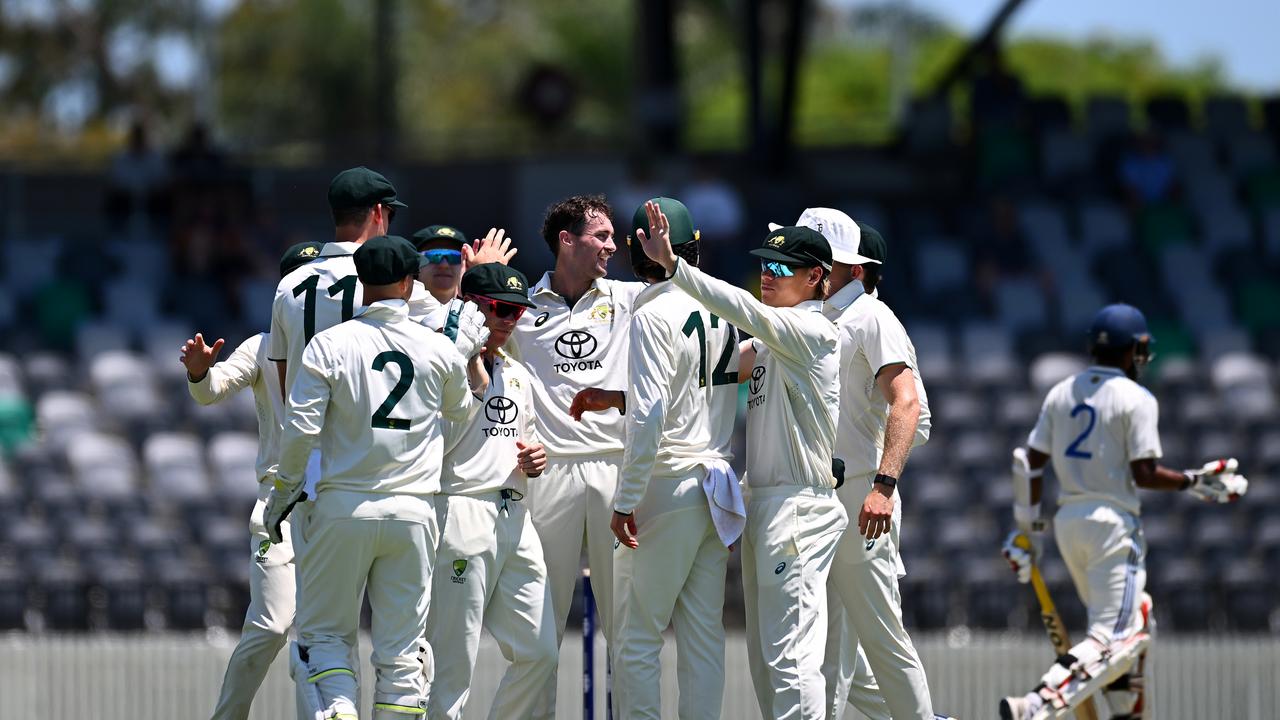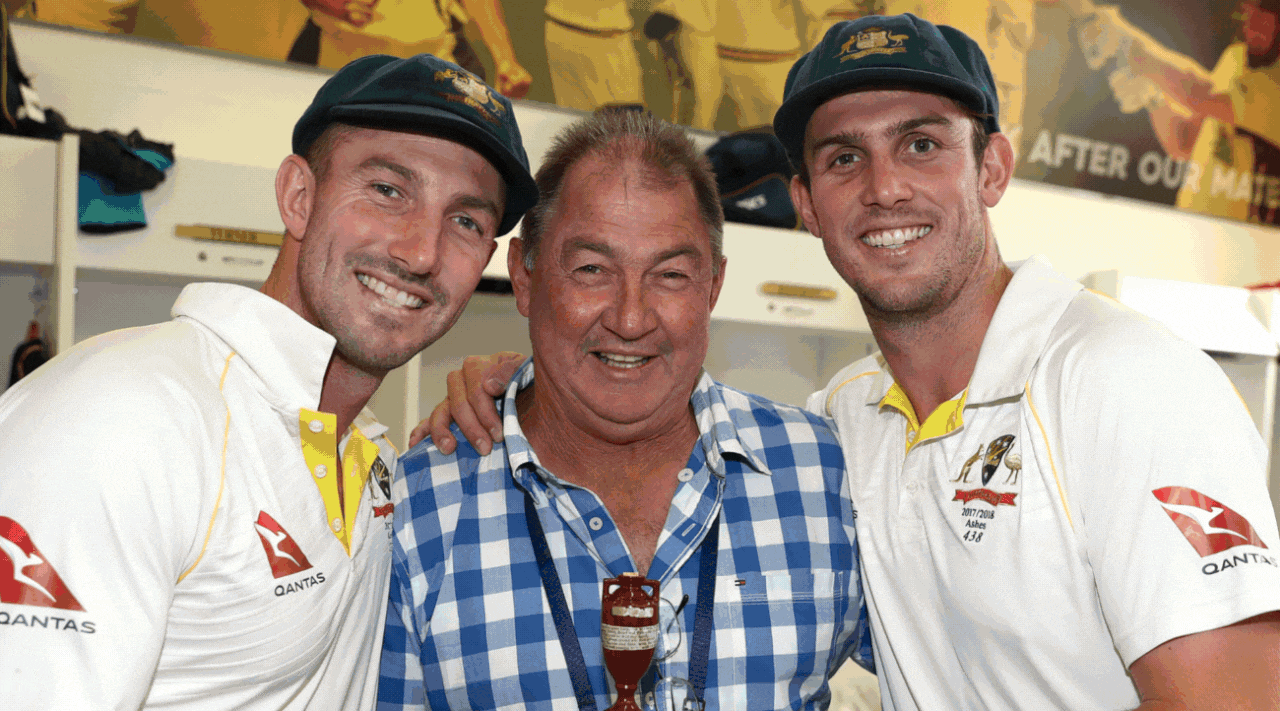Commonwealth Games 2026: Victoria has to fix stadium issues in Ballarat to emulate Birmingham
Plans for a Ballarat athletics stadium will be unable to recreate Birmingham’s electric atmosphere, with plenty for Victoria to fix by 2026.

World Athletics chairman Sebastian Coe said the Victoria 2026 plans for a 30,000-spectator athletics stadium at Ballarat will present “challenges” to recreate the electric atmosphere that has been experienced at the Birmingham Commonwealth Games.
Coe, who was also the chair of the London 2012 organising committee, said that while athletes have “understood intimacy” because they have competed without large 60,000 plus crowds in the aftermath of the covid pandemic, the Victoria organisers will have to consider a raft of issues, the most significant one being transportation.
Track and field, the flagship Games sport, will be staged in Ballarat, an hour and a half away from the major population centre of Melbourne.
Victoria 2026 have pencilled in Ballarat to host both the athletics and boxing, and have plans to expand the current Eureka stadium, which normally hosts Aussie Rules and soccer matches, from it current 11,000 capacity to 20,000 as a Games legacy, In addition they plan to add 10,000 temporary seats so that for the Games it can hold 30,000 spectators.

But front of mind for Coe is that the Alexander Stadium in Birmingham, which holds 37,000 people has been a sell out for every session including the heats, and is well connected with extensive rail links across the country, attracting supporters from well outside the city and also boasts extensive hotel accommodation.
Coe said: “There is a challenge for Victoria, and actually not dissimilar to Brisbane as well, and I speak with two hats on here, one as my experience in London and also as federation president, we do want to see full stadia.
“People from smaller communities or getting people from smaller communities into providing that sort of atmosphere is a challenge. I get the regionalisation and I get the sound issues about public finance and sustainability but the organiser in me says that will be a challenge, it won’t be insurmountable, but it’s a challenge.’’
Coe is not advocating that the athletics is shifted to the Melbourne Cricket Ground, but rather that the organisers have a fully developed and attractive plan how to move people to the regional areas to attend events.

While communities around Ballarat will be strong supporters of the track and field, it is unlikely they will buy repeat tickets to multiple sessions, and organisers will have to make it easy and attractive for people in bigger population centres to be able to get to and from Ballarat. The town, which has a population of 115,000, has several dozen hotels, but most rooms would be snapped up by teams, support staff, police and security and broadcasters.
World Athletics has just hosted its world championships in Eugene, a similar sized city to Ballarat, where finals nights were sold out, but tickets were still unsold for heat sessions - blamed on little accommodation options and transport difficulties.
In Australia there have been rumours that Coe may be approached to chair the Brisbane 2032 Olympic organising committee, but when it was put to him he was shocked by the suggestion.
“No absolutely not, it is the first time heard that, no,’’ he said.
When asked if he was interested, he replied: “ I mean honestly of all the questions I have been asked in five years, that is absolutely out of left field, no one has uttered the thought, no.”

Coe told NewsCorp Australia that the World Athletics council will consider several important issues at its next meeting in November, including whether Russia will be reinstated after satisfying conditions laid down by the anti doping Taskforce. Russian athletes have been banned because of problems with Russian doping and the testing at the laboratory since 2015, but independent observers have indicated there has been a welcome cultural shift in the way Russia views anti doping.
Coe said in respect to the Russian ban because of drugs issues: “we can see light at the end of the tunnel’’. But Russian Federation and Belarus athletes are also banned because of the war in Ukraine, and for the council to lift that ban they “would have be be satisfied that that situation is normalised enough for Ukraine athletes to be able to train and prepare themselves properly and attend a world championships unfettered”.
The International Olympic Committee is yet to make a decision about whether Russian competitors across all sports can attend the Paris 2024 Olympic Games, but with sports beginning their qualifying periods for the Games soon, it could be that the Russians can’t qualify in any case.
Space technology for 2026
Space technology has been tracking athletes for the first time at a major global sporting event at these Commonwealth Games, but is evolving so rapidly experts predict avatars will be the way of the future for all sports.
In years to come, computer-generated avatars of specific athletes – mirroring their size, speed, lung capacity and reaction to stress or fatigue – will simulate performances so the athletes themselves can tailor training programs to turn weakness into strength.
It seems some far-fetched Star Trek idea, however the genesis of this advancement has been put in place in Birmingham, where runners have been tracked by sensors on their bibs, analysed by powerful cameras to produce never-before-seen data.
The man in charge of timekeeping at the Games, chief executive of Swiss Timing, Alain Zobrist, revealed how this works.
“It’s a motion sensor and positioning system that is combined in one,” Zobrist told News Corp Australia.
“In athletics, it’s placed in the bib of the athletes.
“That was the starting point, then eventually we could use cameras with a special software, an algorithm with artificial intelligence, that could follow moving objects and recognise patterns of movement and provide information accordingly.

“We’re moving away from tags to more computer vision and artificial intelligence, and thanks to this we’re getting a much better understanding of an athlete’s entire performance, from start, during the race, and the finish.
“This is technology we’ve used for the first time in the Commonwealth Games in athletics, these sensors on the athletes.
“We’ve been working with space agencies to have a better understanding of tracking systems.
“You have regular GPS systems in your cars and phones, but space agencies use different technologies to be more accurate with the positioning of a device.
“In sport, we want to be as accurate as possible, we had conversations with space agencies as to what technologies they use and we eventually even deployed some of them with Longines in horse racing.
“The Australian Turf Club in Sydney, Randwick, is equipped with that technology. That was seven years ago, now the technology has evolved and has become smaller so we could put it in the athletes’ bibs.
“We’re going to be using sensors more and more, the advantage is that the athletes won’t have to wear these tags anymore, you point the camera and follow the performances.”
Asked to crystal ball how this technology would evolve, Zobrist said: “You can work with avatars, work in a virtual environment to provide data in competitions in totally different ways to how we know today.

“There are no limits to technologies and how as fans we will consume sports in the future.”
Avatars have already revolutionised the entertainment industry, with Swedish pop group ABBA recently performing concerts in London with the four band members depicted as they were in 1977.
The data returning from the athlete bib sensors has allowed runners to identify their weak points in certain areas of a race or in their own movement.
“What we’ve focused on the past four years is our understanding of athletes’ performances, between start and finish, so we’ve developed technologies that allow us to track their entire performance and as a consequence allows us to explain how they got to their final result,” Zobrist said.
“So we may use sensors that are on the athletes, that allow us to understand their position in the race, their instant speeds, acceleration, deceleration, cadence.
“Or we’re using computer vision and artificial intelligence to track the athletes while they compete, to extract the same information.
“That is of tremendous values, we can provide additional information to spectators on screen with TV graphics, or we can provide information to coaches and athletes.
“Some of the feedback we’ve received from athletes is that they’ve changed bits and pieces of their training program according to the data they received from our new technologies.

“It’s not one race only. With time you can eventually see patterns, and the data that you generate allows you to see tendencies of an athletes’ performance.
“This is going to revolutionise how athletes will train in the future, and how sports is perceived and followed in the future as well.”
Watch company Longines, a subsidiary of Swatch Group and official timekeepers of the Commonwealth Games, have signed an extension to ensure they remain on board for Victoria 2028, so the latest technology will be available in four years in Australia.
Founded in 1832 in Switzerland, Longines’ first time pieces were put together by farmers who couldn’t work in winter months and needed extra jobs.
It has evolved into one of the leading luxury watch brands in the world, while a Longines watch owned by Albert Einstein and auctioned in 2008 for $US596,000 now sits in Switzerland’s Bern Historical Museum.
Longines vice president of international sales, Xavier Ligero, said the company is proud to have broken technological barriers for human achievement and not destruction.
“Many industries were pushed to develop and innovate because of war, in the case of the watch industry we can really see, looking at our history, that this quest of precision and technology was really because of sport,” Ligero said.
“I really like this, to see how sport was important to us.
“We had military watches at the time related to that, but when it comes to the quest of precision and looking for these tenths of a second, hundredths of a second, it was always related to sports.”






